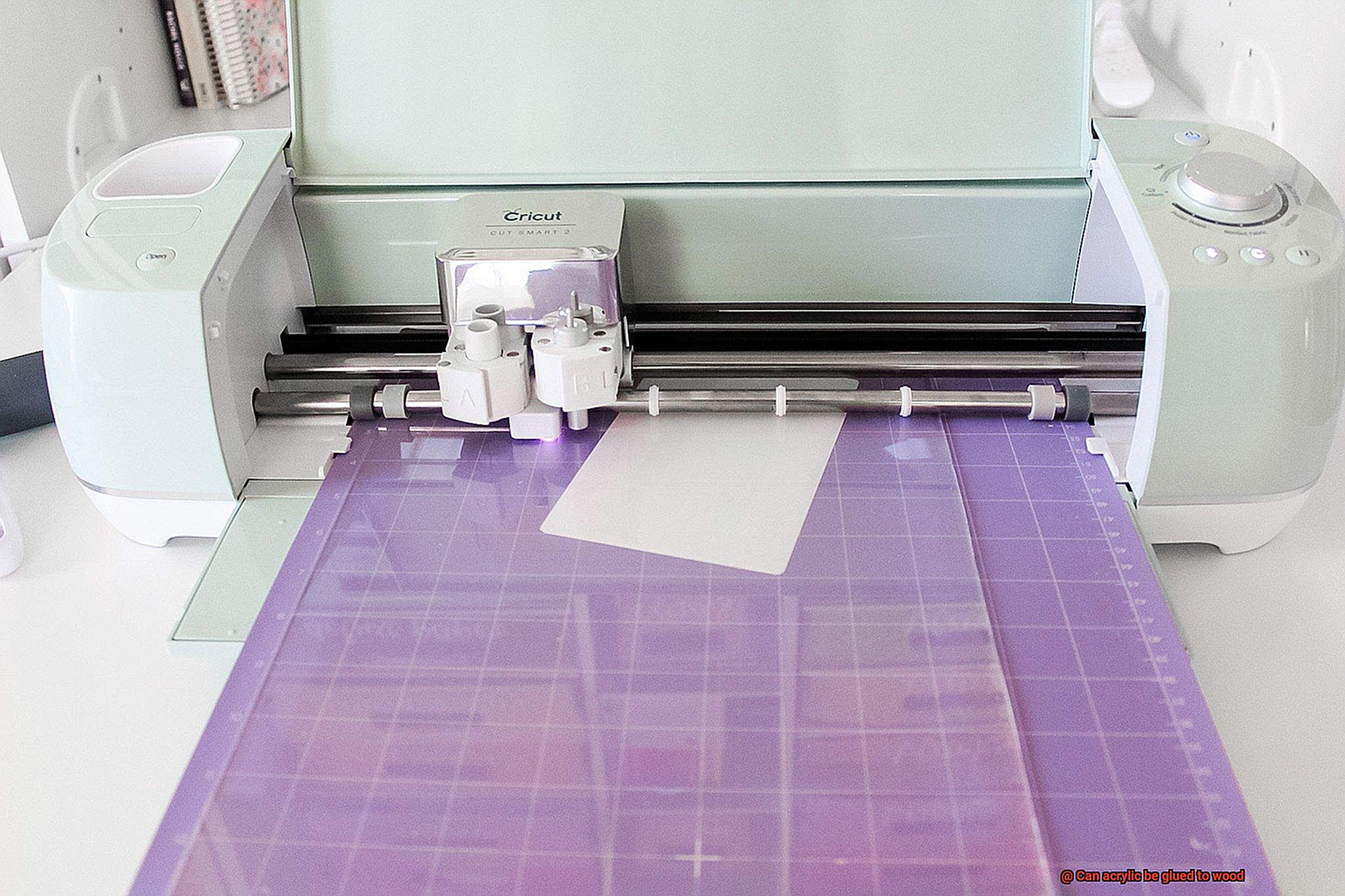Title: Merging Materials: The Art of Bonding Acrylic and Wood
Introduction:
Contents
- 1 What is Acrylic?
- 2 What is Wood?
- 3 Adhesive Types for Gluing Acrylic to Wood
- 4 Preparation Techniques for Gluing Acrylic to Wood
- 5 Applying the Adhesive
- 6 Safety Precautions When Working with Acrylic Cement or Solvent-Based Adhesives
- 7 Benefits of Bonding Acrylic and Wood Together
- 8 Common Uses for Bonded Acrylic and Wood Projects
- 9 Conclusion
Ah, the thrill of combining materials to create something truly extraordinary. Whether you’re a crafty DIY enthusiast or a seasoned woodworker, the tantalizing question remains: can acrylic be glued to wood? Picture it – the transparency and versatility of acrylic meeting the organic warmth and natural beauty of wood. It’s a match made in creative heaven.
Acrylic, also known as Plexiglass or PMMA (polymethyl methacrylate), is a material that oozes charm and finds its way into countless industries. Architects, artists, and designers alike are drawn to its durability, aesthetic appeal, and ability to transform any project into a masterpiece. And let’s not forget about wood – that timeless wonder that has been shaping our world for centuries with its rustic elegance.
Bringing these two materials together can elevate your projects to new heights, adding an enchanting touch that captivates both the eye and the soul. But before you embark on this artistic journey, it’s crucial to understand if acrylic and wood can truly bond as one, along with the right techniques for gluing them together.
In this blog post extravaganza, we’re diving deep into the mesmerizing realm of acrylic and wood bonding. We’ll unravel the mysteries behind their compatibility, explore popular gluing methods, provide tips for ensuring a successful union, and even discuss some jaw-dropping applications for this dynamic duo. So if you’re itching to blend the elegance of acrylic with the natural charm of wood – fear not. We have all the answers to your burning question: Can acrylic be glued to wood?
Buckle up – it’s time for an adventure where creativity knows no bounds.
What is Acrylic?
Acrylic, a captivating plastic material with endless possibilities, holds the power to transform ordinary projects into extraordinary works of art. Whether you’re an avid DIY enthusiast or a skilled craftsman, understanding the enchantment of acrylic opens doors to a world filled with innovation and creativity. In this captivating journey, we will unravel the secrets of acrylic, exploring its mesmerizing characteristics and uncovering the intricate process of bonding it with wood for stunning creations that will leave a lasting impression.
The Captivating Essence of Acrylic:
Imagine a material that seamlessly blends transparency and strength, allowing light to dance through its surface without missing a beat. That material is acrylic. Known by names like Plexiglas, Lucite, or Perspex, acrylic is a remarkable synthetic substance derived from the alchemy of acrylic acid. Its breathtaking clarity makes it an ideal choice for windows, display cases, and even eyeglass lenses. But don’t be fooled by its transparency; acrylic can also be manufactured in a kaleidoscope of colors and finishes, providing artists and designers with an expansive palette to bring their visions to life.
A Resilient Ally:
Anchored in durability, acrylic stands tall against the test of time and weather. Unlike fragile glass, it boasts remarkable resistance to impact and weathering. This lightweight wonder resists the elements with unmatched strength, making it perfect for outdoor applications that demand resilience amidst nature’s harshest forces. Unyielding to extreme temperatures, UV radiation, and even chemical exposure, acrylic remains steadfast while retaining its crystalline clarity.
An Artisan’s Dream:
Crafted by the hands of artists and visionaries alike, acrylic is an artisan’s dream come true. With the ability to be cut, drilled, routed, and shaped using traditional woodworking tools, it bends to the will of the creative mind. From intricate signage to breathtaking furniture, from awe-inspiring decorative items to architectural marvels, acrylic molds itself into endless forms, bringing imagination to life with remarkable ease.
Forever Radiant:
Picture a material that defies time, maintaining its brilliance and luster throughout the ages. Acrylic is that shining star. While other plastics may succumb to yellowing or brittleness when exposed to sunlight or the passage of time, acrylic stands tall, remaining vibrant and resilient. Its steadfastness ensures that your creations, whether displayed indoors or out in the open, will radiate with the same allure for years to come.
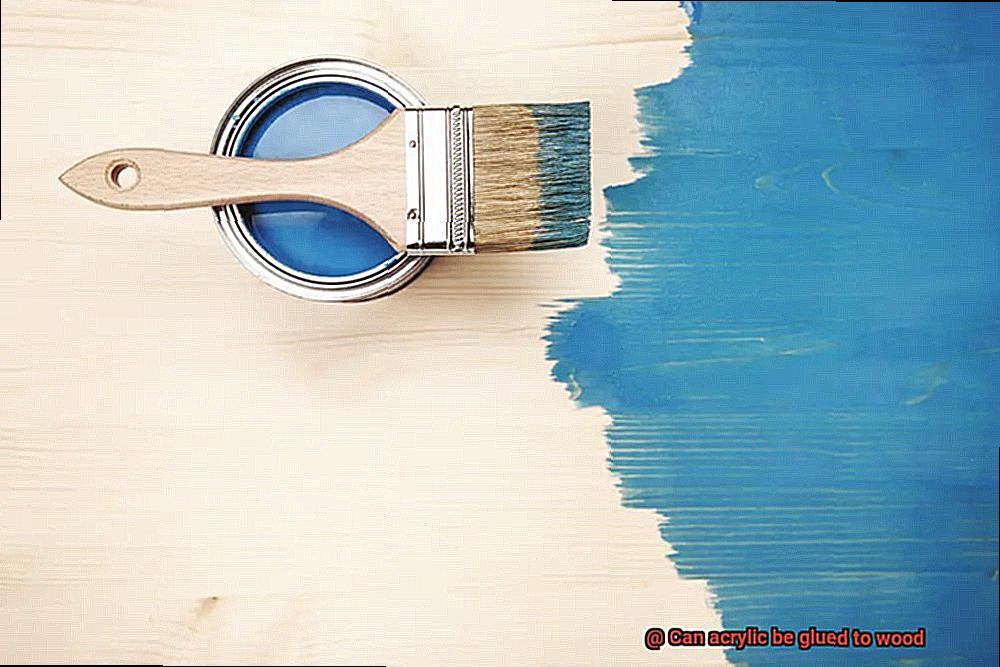
What is Wood?
Wood, the timeless material used by humans for centuries, is more than just a simple substance. It is a natural wonder that comes from trees and possesses unique properties that make it an invaluable resource for various applications.
At its core, wood is composed of fibers, long and thin cells that provide strength and flexibility to the material. These fibers are held together by lignin, a glue-like substance that gives wood its structural integrity. The composition of wood can vary depending on the type of tree it comes from, but generally, it consists of cellulose, hemicellulose, lignin, and other compounds.
But what truly sets wood apart is its cellular structure. Despite its lightweight nature, wood is incredibly strong. It’s like nature’s own superpower. This strength makes it ideal for construction purposes, allowing us to build sturdy homes, bridges, and furniture. And let’s not forget about its natural beauty. The varied grain patterns and colors of wood add a touch of elegance to any space.
Wood also boasts impressive insulating properties. It acts as a barrier against heat and sound, making it perfect for doors, windows, and flooring. It keeps us warm in the winter and shields us from unwanted noise. Imagine a cozy cabin nestled in the woods, where the wooden walls not only provide protection but also create a peaceful acoustic environment.
When it comes to classifying wood, we have hardwood and softwood. Hardwood, like oak and mahogany, is dense and durable. It’s like the heavyweight champion of wood. Softwood, on the other hand, such as pine and cedar, is lighter and more abundant. But don’t underestimate softwood – it has its own advantages and applications. It’s like the agile gymnast of wood.
To enhance its properties or create specific products, wood can undergo various processes. Seasoning or drying the wood reduces its moisture content and prevents warping or cracking. Cutting, planing, sanding – these techniques shape the wood into our desired forms. And let’s not forget about treating it with preservatives to protect it from decay and insects. It’s like giving wood a suit of armor.
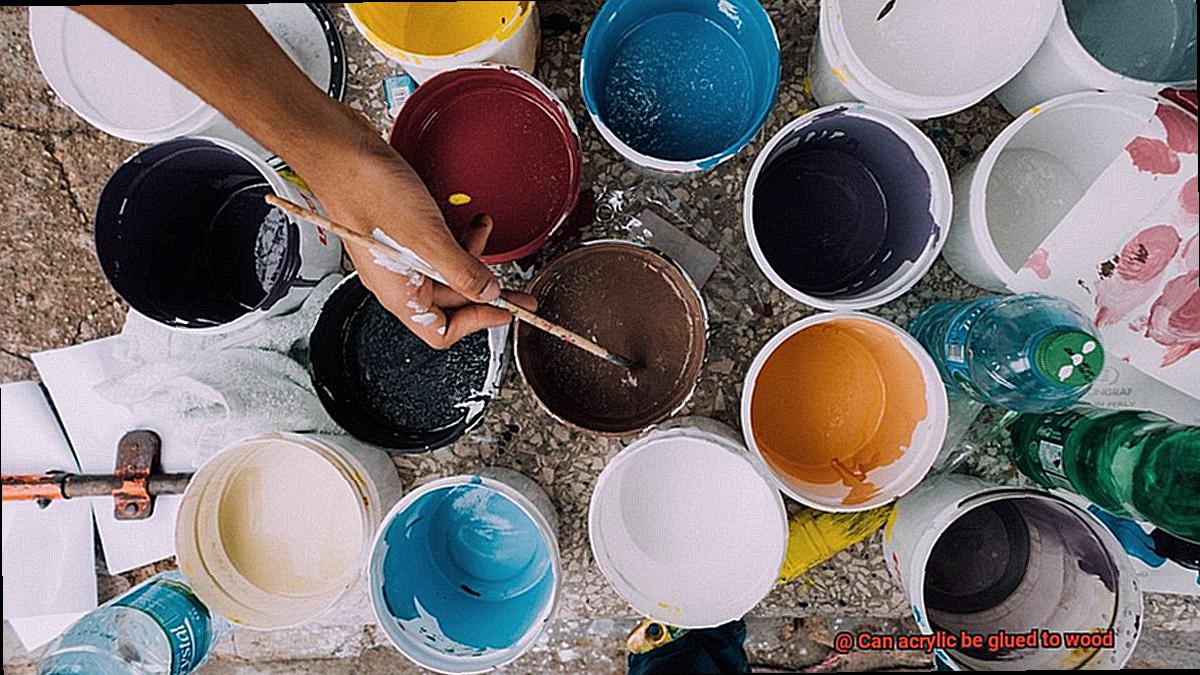
Adhesive Types for Gluing Acrylic to Wood
The answer is yes. Acrylic and wood can be bonded together to create beautiful and unique projects. However, achieving a strong and durable bond requires using the right adhesive and following proper surface preparation techniques. In this blog post, we will explore the various adhesive types that can be used for gluing acrylic to wood and discuss the importance of surface preparation and following the manufacturer’s instructions for a successful bond.
Epoxy Resin:
Epoxy resin is a popular adhesive option for bonding acrylic to wood. Known for its strength and durability, it is suitable for both indoor and outdoor applications. It is crucial to choose an epoxy resin specifically formulated for bonding acrylic, as general-purpose epoxy resins may not provide a strong bond. When using epoxy resin, it is important to mix the resin and hardener properly and follow the manufacturer’s instructions for curing time. This will ensure a strong bond between the acrylic and wood surfaces.
Cyanoacrylate Glue:
Cyanoacrylate glue, commonly known as super glue, is another adhesive option for bonding acrylic to wood. It is fast-setting and forms a strong bond between the surfaces. However, before applying the glue, it is essential to ensure that the surfaces are clean and dry to prevent any weakening of the bond. Remember, a little goes a long way with super glue, so applying too much might result in messy overflow.

Acrylic Cement:
Acrylic cement is specifically designed for bonding acrylic materials together, creating a seamless and durable bond. It chemically bonds the surfaces, ensuring a strong connection. However, it may not provide a strong bond on other types of plastics or wood. Applying acrylic cement requires caution as it emits strong fumes, so proper ventilation is crucial during application.
Specialized Acrylic Adhesives:
Specialized acrylic adhesives are available on the market for bonding acrylic to various substrates, including wood. These adhesives offer high bond strength and excellent resistance to temperature, moisture, and UV exposure. Following the manufacturer’s instructions is essential when using these specialized acrylic adhesives to ensure a successful bond. These adhesives are formulated specifically for bonding acrylic surfaces, providing a reliable and long-lasting bond.
Surface Preparation:
Proper surface preparation is key to achieving a strong bond between acrylic and wood. Both surfaces should be clean, dry, and free from any oil, dust, or debris. Cleaning the surfaces with a mild detergent or rubbing alcohol can remove any contaminants. Additionally, roughening the surfaces with sandpaper can improve adhesion by creating more surface area for the adhesive to grip. Remember to wear safety goggles and gloves when handling sandpaper to protect yourself.
Preparation Techniques for Gluing Acrylic to Wood
The fusion of these two materials can create stunning and unique pieces that are sure to impress. However, before diving into your project headfirst, it’s crucial to understand the essential preparation techniques necessary for achieving a strong and durable bond.
First and foremost, cleanliness is key. Both the acrylic and wood surfaces must be spotless, free from any dust, dirt, or grease. These contaminants can hinder the adhesive bond, resulting in a weak joint. Begin by thoroughly cleaning the wood surface with a mild detergent or soap and water. Scrub away any dirt or residue using a clean cloth or sponge. Rinse the surface with clean water and allow it to dry completely before moving on to the next step.
Now turn your attention to the acrylic surface. Use a non-abrasive cleaner specifically designed for acrylic materials. Harsh chemicals or cleaners containing ammonia can wreak havoc on the delicate acrylic surface, so it’s best to avoid them. Gently wipe the surface with a soft cloth or sponge to remove any dirt or fingerprints.
Once both surfaces are pristine, it’s time to create a rougher texture on the wood surface for enhanced adhesion. Employ fine-grit sandpaper and sand in the direction of the wood grain. Be careful not to oversand or damage the wood surface; we want it rough, not ruined.
After sanding, eliminate any lingering dust or debris from both surfaces using a clean cloth or compressed air. It’s absolutely essential to ensure that no particles remain behind that could interfere with the adhesive bond.
Now comes the exhilarating part – selecting an appropriate adhesive for bonding acrylic to wood. There are several options available, such as epoxy, polyurethane, and cyanoacrylate (super glue). The choice of adhesive depends on factors like the application, intended use, and personal preference. Always follow the manufacturer’s instructions when applying the adhesive to achieve optimal results.
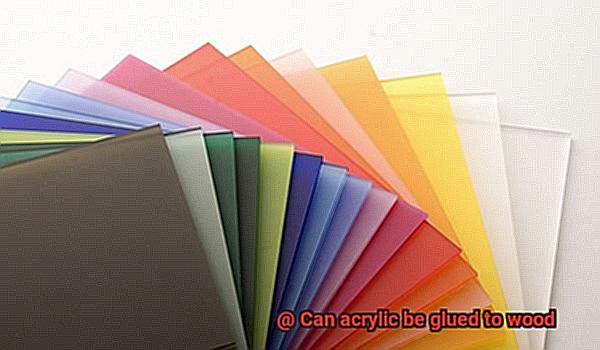
With adhesive in hand, carefully position the acrylic piece onto the wood surface. Apply gentle and even pressure to ensure excellent contact between the two materials. You can employ clamps or weights to hold the pieces in place while the adhesive cures.
Allow the adhesive to cure for the recommended time specified by the manufacturer. This is not a time for disturbances or stress on the joint; even a minor disruption can weaken the bond. Exercise patience and let nature take its course.
Once the adhesive has fully cured, inspect the joint for any signs of weakness or gaps. If necessary, apply additional adhesive to reinforce the bond and ensure its longevity.
Lastly, tidy up any excess adhesive using a suitable solvent or cleaner. Approach this task with caution to avoid damaging the delicate acrylic surface while removing any unwanted residue.
Applying the Adhesive
In this guide, we will walk you through the step-by-step process of applying adhesive to create a seamless connection between these two materials. So grab your safety goggles, roll up your sleeves, and let’s dive in.
Step 1: Choose the Right Adhesive
Not all adhesives are created equal. For bonding acrylic and wood, a two-part epoxy adhesive is your best bet. Its remarkable bonding capabilities make it perfect for creating a lasting connection between these materials.
Step 2: Prepare the Surfaces
Before applying any adhesive, proper surface preparation is essential. Thoroughly clean both the acrylic and wood surfaces, ensuring they are free from dust, grease, or any other contaminants that could hinder the adhesion process. To enhance adhesion, lightly sand both surfaces with fine-grit sandpaper, creating a rough texture for maximum grip.
Step 3: Apply the Adhesive
Now it’s time to mix and apply the adhesive. Follow the manufacturer’s instructions closely, as mixing ratios and application techniques may vary. Typically, you’ll need to mix equal parts of epoxy resin and hardener. Once mixed, apply a thin layer of the adhesive onto both the acrylic and wood surfaces.
Step 4: Align and Press
With the adhesive applied, carefully align the acrylic and wood pieces together. Ensure they are in the desired position before pressing them firmly together. To hold everything in place while the adhesive cures, you can use clamps or weights.
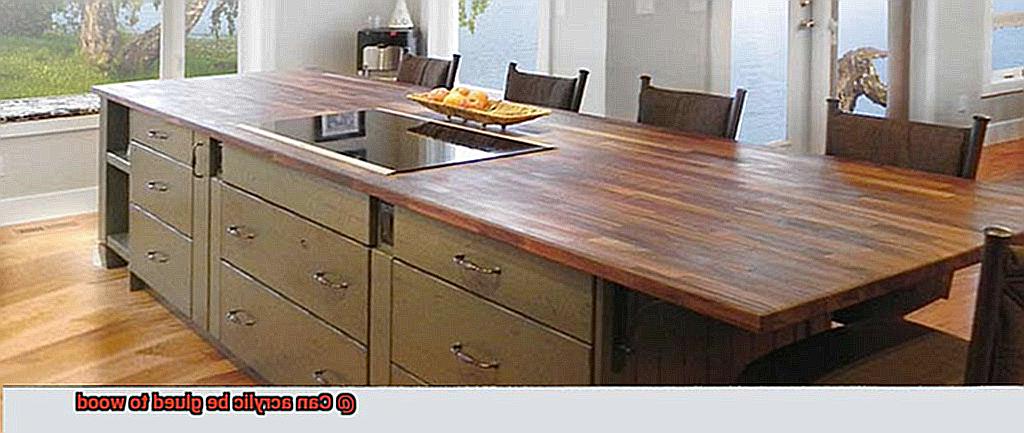
Step 5: Allow for Curing Time
Patience is key at this stage. The curing time for epoxy adhesives can vary depending on the brand and type used. Follow the manufacturer’s recommended curing time to guarantee a strong and durable bond.
Step 6: Remove Excess Residue
Once the adhesive has fully cured, you may notice some excess or visible residue. Don’t fret. This can be easily removed using a solvent or by carefully scraping it off without damaging the surfaces.
Remember, epoxy adhesives are not your only option. Polyurethane adhesives and cyanoacrylate (super glue) can also be effective alternatives. Just ensure they are compatible with both acrylic and wood before use.
Safety Precautions When Working with Acrylic Cement or Solvent-Based Adhesives
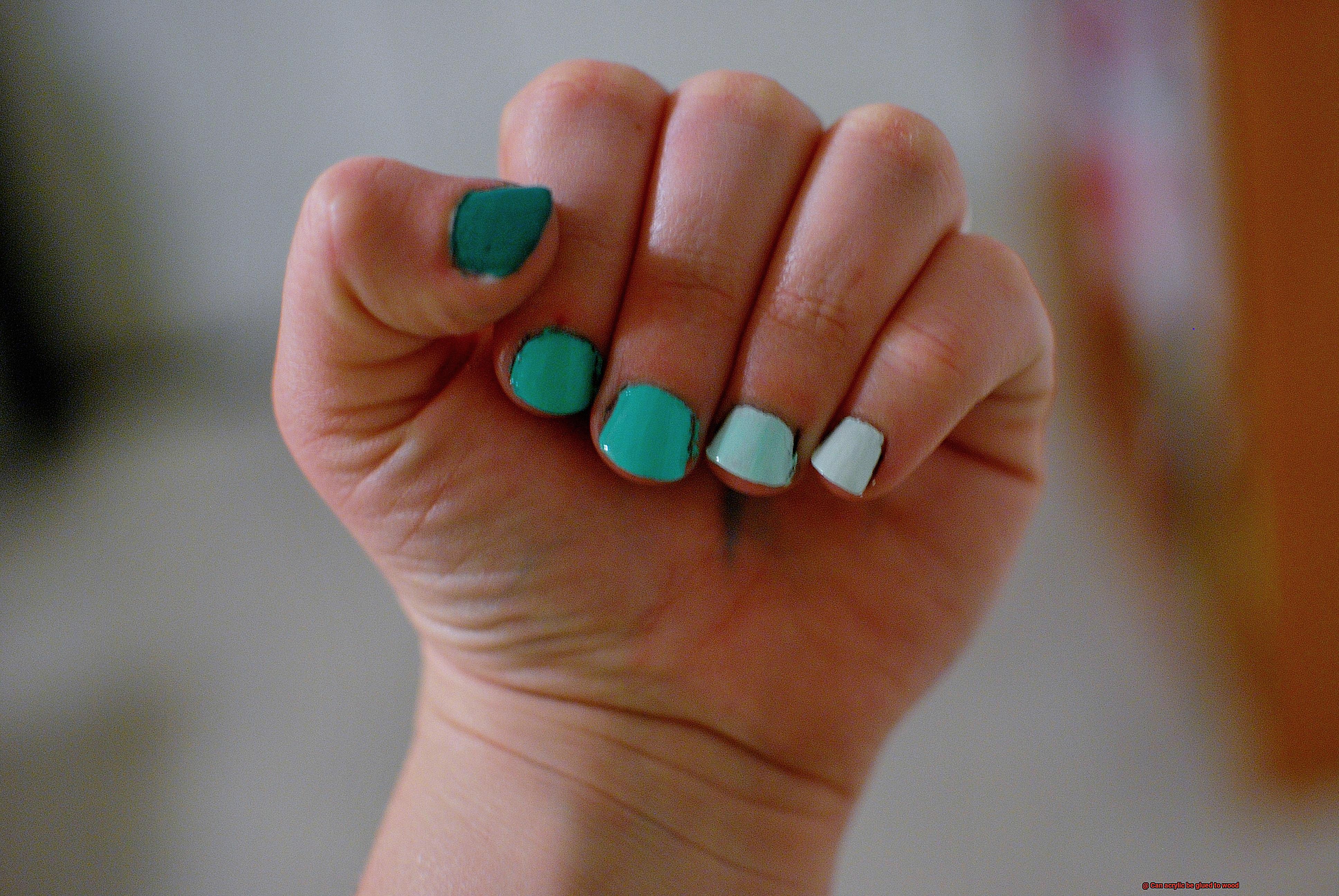
As we embark on our crafting journey, it is important to prioritize safety. In this guide, we will explore the safety precautions necessary when working with acrylic cement or solvent-based adhesives. By following these precautions, we can ensure a successful and enjoyable crafting experience.
The Potential Risks:
Acrylic cement and solvent-based adhesives are powerful bonding agents, but they come with potential risks. These adhesives contain volatile organic compounds (VOCs), which can be harmful when inhaled. They can also cause skin irritation and allergic reactions. Additionally, they are highly flammable. However, by following simple safety precautions, we can create our masterpieces without worry.
Safety Precautions:
Ensure Proper Ventilation:
Imagine working in a stuffy room filled with adhesive fumes – not pleasant. Make sure your workspace is well-ventilated by opening windows or using exhaust fans. Fresh air circulation will help dissipate any harmful fumes.
Wear Personal Protective Equipment (PPE):
Protect yourself like a superhero. Equip safety goggles to shield your eyes from splashes or fumes. Wear gloves to avoid direct contact with the adhesive, and use a respirator mask to filter out any harmful vapors.
Avoid Skin Contact:
Your skin deserves care, so let’s keep it safe. Always wear gloves to shield your hands from direct contact with the adhesive. If accidental skin contact occurs, immediately wash the affected area with soap and water.
Practice Fire Safety:
Keep the flames away from our crafting area. Acrylic cement and solvent-based adhesives are highly flammable, so store them away from ignition sources. Choose a cool, well-ventilated storage area away from direct sunlight or heat sources.
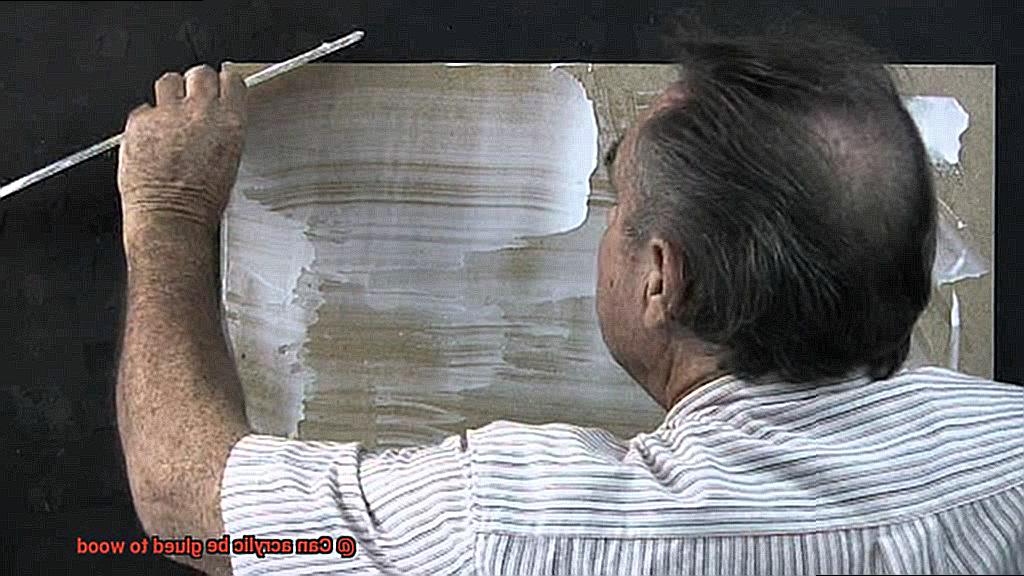
Work in a Well-lit Area:
Let there be light. Adequate lighting ensures better visibility and reduces the chances of accidents or spills. Let your creativity shine brightly.
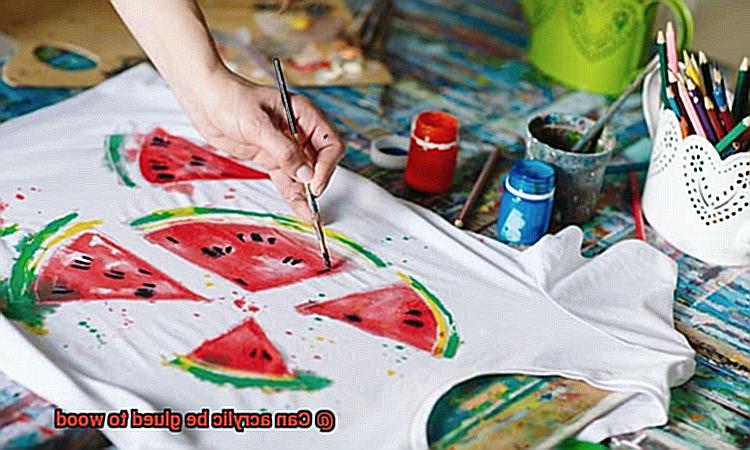
Read and Follow Instructions:
Remember, read the manual. Carefully follow the manufacturer’s instructions for optimal results and safety. Each adhesive may have specific precautions or application techniques that need to be followed.
Keep Children and Pets Away:
Our little ones and furry friends are curious beings, but let’s keep them safe. Acrylic cement and solvent-based adhesives can be toxic if ingested or inhaled, so it’s best to create in a child- and pet-free zone.
Proper Storage and Disposal:
When the crafting session is over, it’s time to tidy up. Store the adhesive in its original container, following the manufacturer’s instructions for proper storage. Dispose of any leftover adhesive according to local regulations.
Benefits of Bonding Acrylic and Wood Together
Prepare yourself for an adventure that will elevate your projects to new heights, brimming with strength, durability, and unmatched aesthetics. Don your gear, and let us delve into the superpowers of this dynamic duo.
Amplified Strength and Durability:
The foremost advantage of bonding acrylic and wood lies in the unparalleled strength and durability it imparts to the joint. With a specially formulated adhesive, this bond ensures unwavering attachment even under immense pressure or heavy loads. Whether constructing furniture or signage, this increased strength guarantees longevity and reliability.
Aesthetically Pleasing Marvels:
Imagine blending the natural allure of wood with the sleek, modern charm of acrylic. By bonding these materials together, you unlock a realm of design possibilities. Acrylic offers an array of colors and finishes, allowing you to create visually captivating structures that seamlessly merge the best of both worlds. Prepare for jaw-dropping creations that leave lasting impressions.
Impenetrable Defense Against the Elements:
Weatherproofing your projects becomes effortless when you bond acrylic and wood together. The adhesive forms a protective barrier, shielding against moisture, UV rays, and other environmental factors that could potentially harm your masterpiece. Perfect for outdoor applications or items exposed to moisture, such as furniture or signage.
Enhanced Functionality:

Acrylic’s transparency and clarity make it an exceptional choice for windows or display cases. When combined with wood, you can craft functional yet visually captivating items that serve both practical and decorative purposes. Whether showcasing exquisite jewelry or creating stunning window features, bonding acrylic and wood elevates functionality to extraordinary levels.
Simplified Maintenance:
Cleaning becomes a breeze when acrylic is involved. Its non-porous nature allows for easy maintenance with just mild soap and water, while wood may require specialized care. By bonding the two materials together, you simplify the cleaning process and ensure your creation remains in pristine condition for longer.
Unleashing Boundless Creativity:
Bid farewell to traditional methods like screws and nails. Bonding acrylic and wood offers a seamless connection between these materials, enabling intricate and complex designs to come to life. Architects, designers, and DIY enthusiasts can unleash their creativity, fashioning unique structures or objects that truly stand out.
Common Uses for Bonded Acrylic and Wood Projects
Step into the captivating world of bonded acrylic and wood projects and prepare to be amazed. Whether you’re a DIY pro or just starting out, this dynamic duo of materials is guaranteed to spark your creativity. Let’s explore the common uses for bonded acrylic and wood projects and unlock a world of possibilities.
First and foremost, let’s delve into the realm of interior design. Acrylic’s sleek and modern appearance perfectly complements wood’s warm and natural feel. By bonding acrylic sheets to wooden frames or panels, you can create breathtaking furniture pieces, wall decorations, and even room dividers. Picture a chic acrylic coffee table with a wooden base or an enchanting wall art piece combining acrylic and wood elements. The options are truly endless.
Next on our list are display cases and shelves. Acrylic offers a crystal-clear surface that optimizes visibility, while wood adds stability and durability. These projects are commonly found in retail stores, museums, and art galleries, where they elegantly showcase products or artworks.
Bonded acrylic and wood can also make a bold statement in signage and logos. Imagine custom signs with acrylic letters bonded onto wooden backings. The interplay of colors, textures, and finishes will undoubtedly set your business apart from the rest.
If you’re a craft enthusiast, bonded acrylic and wood offer limitless opportunities for personalized gifts and home decor items. Engraved acrylic handles on wooden cutting boards or acrylic accents on picture frames can infuse a modern twist into traditional designs.
But hold on tight because we’re not done yet. Bonded acrylic and wood projects can brave the great outdoors as well. Garden furniture, decorative elements, or architectural features like facades and canopies can benefit from the weather-resistant properties of acrylic combined with the durability of wood.
3KzZDi-aXD4″ >
Conclusion
Yes, acrylic can indeed be glued to wood.
It is a versatile and durable material that can adhere well to various surfaces, including wood. By using the right adhesive and following proper application techniques, you can create a strong bond between acrylic and wood.
Whether you are working on a DIY project or a professional installation, gluing acrylic to wood opens up endless possibilities for creativity and design.

